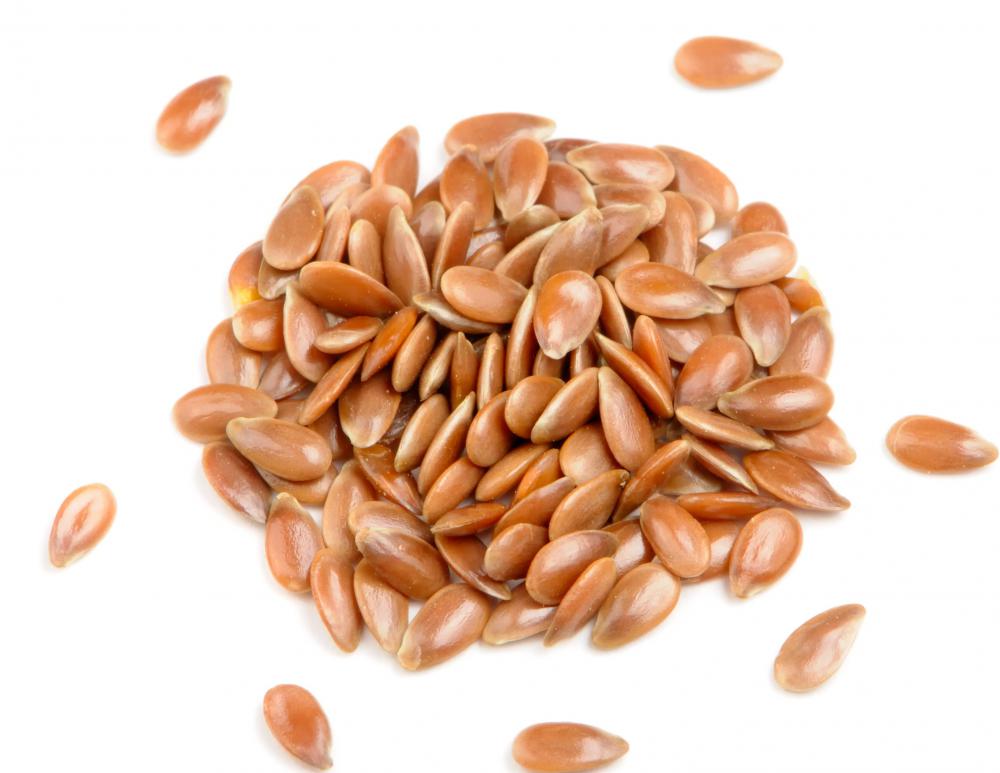At DelightedCooking, we're committed to delivering accurate, trustworthy information. Our expert-authored content is rigorously fact-checked and sourced from credible authorities. Discover how we uphold the highest standards in providing you with reliable knowledge.
What are Different Types of Nutrition Bars?
Nutrition bars are food items meant to be consumed in a quick sitting, or on the go. They contain a wide range of vital nutrients and vitamins, as well as sufficient protein and carbohydrates to keep the body functioning. Depending on the purpose, nutrition bars may focus on protein and minimize carbohydrates, or may attempt to act more as a complete meal, with a higher caloric load. Generally, nutrition bars are significantly flavored, usually sweetened, to make them more appetizing to people, often making them very similar to baked goods or sweets.
Most nutrition bars are built around a core of complex carbohydrates, to give the body energy for an extended period of time, often replacing a meal. In this way, nutrition bars can be seen as quite different from nutrition drinks, which generally give instant energy that is meant to be utilized by the body immediately, and may cause an energy crash soon thereafter. In the United States, many nutrition bars are marketed as a replacement for cereal or other simple breakfasts, giving on-the-go people an easy alternative to skipping breakfast.

There are five major classes of nutrition bars: protein bars, meal-replacement bars, snack bars, whole food bars, fiber bars. Each of these different types have their own benefits and disadvantages, and each are targeted to a different sort of consumer. Most supermarkets carry at least a few of these types, and many have multiple options within each category.

Protein bars, as the name suggests, push protein intake above all else. These are generally intended for weight lifters or advanced athletes, whose bodies may require more protein for muscle building than they can easily get in a regular meal. The bars will contain one or more sources of protein, often including whey, casein, and soy. Although different types of protein have their own pros and cons, most bars are formulated to give maximum benefits to the widest range of body types.

Meal-replacement bars are, simply enough, bars that are meant to replace an entire meal. This meal is generally breakfast, and they are sometimes referred to as breakfast bars. This type of bar is often just a common breakfast food, such as granola, compressed into a bar shape for consumption on the go. Snack bars are like meal-replacement bars, except they tend to be a bit lighter in terms of calories and fat content.

Whole food bars are relatively new to the marketplace, but are quickly becoming one of the most popular types of nutrition bars. These bars are generally raw, and the foods in them are not processed, or are processed minimally. They are generally made up of a mixture of different nuts, compressed together into a bar form, perhaps with some sweetener added. These bars tend to be higher in fats than the other bars, but many people find them much easier to digest.
Fiber bars were once quite popular, but in recent years only a few brands have survived. These bars are meant for people who need to get more fiber in their diet, generally people later in life, who don’t want to eat things like bran muffins or fibrous cereals. These bars are generally sweetened in some way, and they may be combined with fruits to try to make them more appealing.
AS FEATURED ON:
AS FEATURED ON:














Discussion Comments
I used to eat Luna Bars until I looked at the ridiculously long list of ingredients, not understanding most of them. Now, if I do grab a bar, I'll go for Lara Bars, which sound like they're in the "whole foods" category. It's really refreshing to look at that list of ingredients, which seems to range around 3-5, and recognizing all of them.
Post your comments